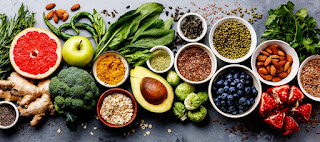Yogic Diet - According to Gheranda Samhita
Moderation of Diet (or) Balanced Diet
A practitioner of yoga without dietary rules is exposed to many diseases and cannot progress in yoga.
A Yogi Should Eat
- RICE (బియ్యం )
- BARLEY (బార్లీ)
- WHEAT FLOUR (గోధుమ పిం డి) and
- MUNG OR GREEN GRAM (పెసర), BLACK GRAM OR URAD (మినుములు), CHICKPEAS OR KABULI CHANA OR BENGAL GRAM (శెనగలు), and BEANS (వం టి బీన్స్ ), all should be eaten clean and without skin.
- PARWAL (బుడమ కాయ), BITTER GOURD (కాకరకాయ)
- YAM (కం దగడ్డ), COLOCASIA (చేమదుం ప), RADISH (ముల్లం గి)
- SAGO (సగ్గుబియ్యం )
- BONDUC NUT (గచ్చ కాయ)
- CUCUMBER (దోసకాయ)
- BRINJAL (వం కాయ)
- RAW PLANTAIN (పచ్చి అరటి) OR UNRIPE PLANTAIN (పం డని అరటి), PLANTAIN STEM (అరటి కాం డం ), PLANTAIN ROOT (అరటి వేరు)
- FIG OR ANJEER (అత్తిపం డు)
- SEASONAL FRESH FRUITS AND VEGETABLES
He may eat (green, fresh vegetables (बा लशा कं), black vegetables (काि लशा कं), the leaves of patola (Parwal Leaf) - బుడం కాయ ఆకు (पटो लपत्रकम्), the Vastuka-saka - బతువా ఆకు (Chenopodium album), and hilamochika SAka - బ్రాహ్మి (Brahmi)). These are the Five leafy green vegetables similar to spinach praised as fit food for yoga.
Fill half of the stomach with pure, sweet, and cooling food, one-quarter with water, and leave the remaining quarter empty for the circulation of air, which is referred to as “mitahara” or moderation of diet. It is particularly significant for individuals who are adhering to yogic practices, emphasizing both physical and spiritual well-being.
Prohibited Foods
In the beginning of yoga practice, one should avoid foods such as pungent (ఘాటైన), sour (పులుపు), salty (ఉప్ప గా), bitter (చేదు), or parched items (ఎం డిపోయిన), along with curd (పెరుగు), buttermilk (మజ్జిగ), heavy vegetables, wine, palm nut (తాటి ముం జలు), jackfruit (పనసపం డు), horse gram (ఉలవలు), and white beans (తెల్ల చిక్కు డు), pumpkin (గుమ్మ డికాయ), the stalks of leafy greens (ఆకు కూరల కాం డాలు), bottle gourd (సొరకాయ), jujube (రేగిపం డు), lemon (నిమ్మ కాయ), garlic (వెల్లుల్లి), lotus stalk (తామర కొమ్మ ), chironji, asafetida (ఇం గువ), and taro root (చేమదుం ప), as well as refrain from excessive traveling, the company of women, and using fire for warmth.
Fresh butter (వెన్న ), ghee (నెయ్యి ), milk, sugar (చక్కె ర), daal (lentils) (పప్పు ధాన్యా లు), amalaki (ఉసిరికాయ), pomegranate (దానిమ్మ), grapes (ద్రాక్ష), ripe bananas (పం డిన అరటిపం డ్లు), etc., should also not be used.
The yogi’s diet should include items like cardamom (ఏలక్కా యలు), nutmeg (జాజికాయ), clove (లవంగం ), rose apple, haritaki (కరక్కా య), and dates (ఖర్జూ ర), while avoiding daal (lentils) (పప్పు ధాన్యా లు) and stimulants ( Stimulants are substances that increase alertness and energy temporarily, often through their impact on the nervous system. Common stimulants include caffeine and certain spices or herbs that may have stimulating effects).
The yogi should consume easily digestible, tasty, and nourishing foods that align with their preferences and are suitable for their well-being.
The Yogi should avoid food that is hard (not easily digestible), putrid (కుళ్ళి పోయిన), stale (నిల్వ ఉన్న), too cold, or too hot.
He should avoid bathing in the early morning and fasting, which causes bodily suffering, should be discarded. Having only one meal a day, not eating at all, or at the end of the night should be discontinued.
Following these rules, the yogi should practice pranayama. At the very beginning, he should consume milk and ghee (నెయ్యి ) every day and take meals twice a day, at noon and in the evening.
Thanks for Reading.



Comments
Post a Comment